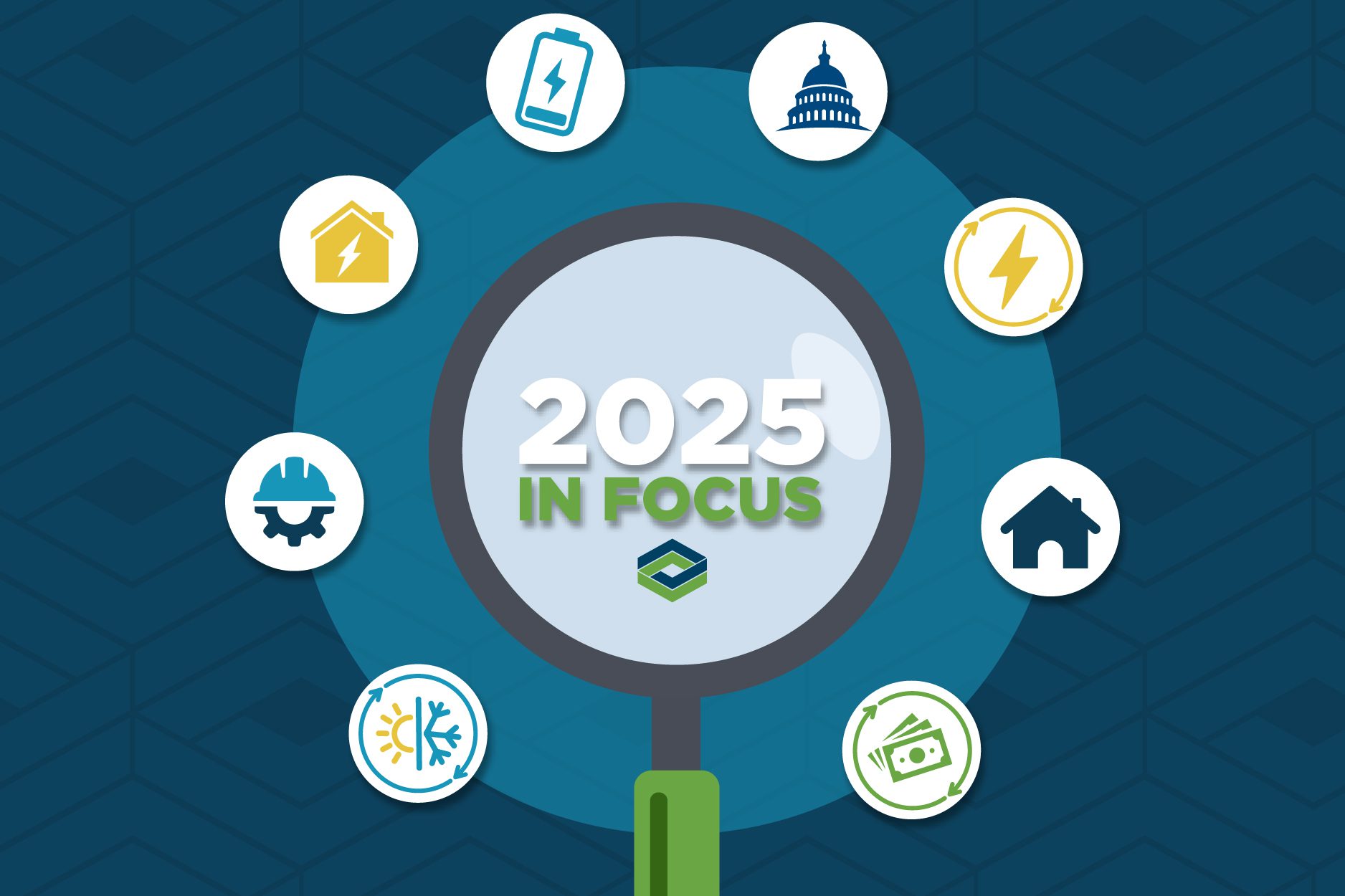Jan 25, 2022
Mapping Where Energy-Efficient Homes Are Being Built
Energy-efficient homes are in high demand due to rising electricity prices and eco-conscious consumer preferences. Energy Star has identified the top states with the most certified homes, with Arizona having the most at 45% of the market. Key performance features of Energy Star-certified properties include optimized heating and cooling systems, an airtight thermal envelope, proper water management, and energy-efficient lighting and appliances. Home performance professionals can apply these techniques in both new and existing structures to increase energy efficiency and reduce costs.
By: Evelyn Long

One of the leading consumer demands in the home construction sector is efficiency-enhancing construction and improvements. Government policies are also being aimed at improving residential energy efficiency, citing the importance of both sustainability goals and lowering residents’ energy costs.
Recently, national data from Energy Star highlights where Energy Star-certified new homes have been built compared to the number of new homes being permitted overall. Performance professionals can look at the Energy Star home map to identify trends in their regions. What can we learn from this map, and what performance requirements are critical for this certification?
The Top States for New Certified Energy-Efficient Homes
Energy Star developed the single-family new homes map to break down the market for energy-efficient structures. After survey professionals assessed the sustainability of new homes around the country, they provided a list of nearly 76,064 residential structures with the Energy Star certification. They also identified the top states with the most energy-efficient homes.
Nationally, Energy Star-certified homes are reducing electricity loss by nearly 103,087,577 kilowatt-hours (kWh) each year. They also save about 258,618 barrels of oil annually, which reduces adverse ecological effects.
The project reveals that Arizona has the most certified houses. Here are the top five states for certified homes:
- Arizona: 18,967 certified homes making up 45% of the market
- Maryland: 3,912 certified homes making up 30% of the market
- Nevada: 2,462 certified homes making up 18% of the market
- Idaho: 1,939 certified homes making up 13% of the market
- Texas: 19,241 certified homes making up 12% of the market
Arizona’s high rates of energy-efficiency are no surprise for those familiar with the construction market in the state. The Home Builders Association of Central Arizona has a strong relationship with local energy companies and many builders are compliant with the voluntary Energy Star program. Consumer demand is especially high, partly because of a desire for sustainability and partly because Arizona homeowners want to conserve costs for year-round cooling.
Performance Features of Energy Star-Certified Properties
There are four main features that make up a certified residential structure.
Heating & Cooling Systems
Heating and cooling can eat up nearly half of the average homeowner’s annual energy spending. Energy Star therefore emphasizes the importance of optimized heating and cooling systems, requiring system designs with properly sized and installed ducts, duct sealing, and mechanical ventilation.
In the process of Energy Star certification, home energy raters will perform various system tests to ensure optimization and ensure air is flowing in each room. Home performance professionals on these projects will want to use careful planning and installation techniques to ensure HVAC systems are up to par.
The Thermal Envelope
One of the top features of an Energy Star-certified home is an airtight seal. When houses have weather-stripping, caulking, or material deficiencies, their heating, ventilation, and air conditioning (HVAC) systems work harder to maintain set indoor temperatures.
Home performance professionals can increase a home’s envelope by adding weather-stripping to prevent conditioned air loss. They may also caulk the border of doors and windows to tighten the seal. Builders can further minimize heat loss by installing high-efficiency insulation.
Because heat rises, attics are target locations for energy loss. Building and home performance professionals may adequately insulate the top floor of residential structures to increase energy efficiency. Another strong target for insulation is a home’s garage, as insulated doors with an R-Value of 11 or higher guard against energy loss via one of the structure’s largest entrances.
The final way builders construct Energy Star-certified buildings is by installing high-performance windows. Single-pane windows are less effective at preventing HVAC-related energy loss. High-efficiency windows have multiple panes to increase their insulation.
Water Management
Water management requirements are another element of the certification process. Poor water management increases the risk of moisture buildup and water damage, which in turn can cause mold and threaten indoor air quality.
Energy Star homes are required to have moisture-resistant foundations along with smart grading to direct the flow of water away from the home. Similarly, the home’s exterior should have a drainage plan to redirect excess precipitation. Moisture-resistant building materials are also essential to water management, providing a guard against water damage in vulnerable spaces like bathrooms.
Lighting & Appliances
This criteria is no surprise, considering the Energy Star program is perhaps best-known for its certification of energy-efficient appliances. Homeowners enjoying a new home should be able to rely on the quality of their investment and the appliances’ ongoing energy efficiency.
Energy Star certifies a wide range of lighting fixtures, light bulbs and household appliances including refrigerators and fans. Homeowners and their builders and/or home performance professionals can select fixtures that are safe, reliable, and cost-efficient. It’s the last step in construction and designing a comprehensively energy efficient home.
Energy-Efficient Homes Being Built Nationwide
The consumer demand for energy-efficient homes is increasing as electricity prices rise. When buildings require less power to perform conventional functions, residents can save money on their utilities. Efficiency-enhancing features also support eco-consumer demands by reducing greenhouse gas emissions.
Energy Star data shows that while market penetration for new energy-efficiency certified homes may be farther ahead in some states than others, these numbers are only likely to increase in the years ahead. Performance professionals can keep tabs on national trends and work on applying energy-efficiency techniques in both new and existing structures.





